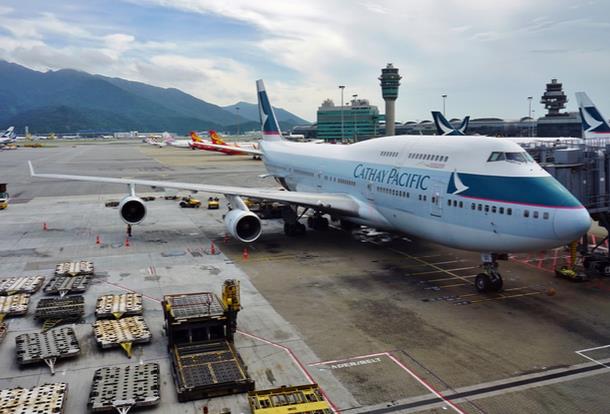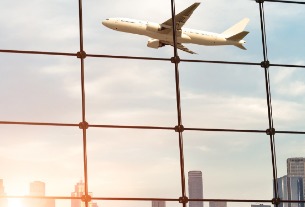Lola, the startup brainchild of Kayak co-founder Paul English that launched in 2016, finally has a chance to make good on its promise to disrupt travel with artificial intelligence-powered travel agents.
Lola has partnered with American Express Global Business Travel, the largest travel management company in the world, to help bring its service to more customers in the U.S.
The five-year exclusive deal, which is based around a revenue-sharing arrangement, also allows American Express Global Business Travel to purchase equity from Lola should the partnership prove lucrative. “I’d be very happy if GBT ends up owning a lot of Lola,” said English.
This deal represents the travel management company’s first major push into the less-complex end of the corporate travel market.
“We’re very self-aware about where our solutions excel, and this is a market where we have some business and felt like the market was much bigger than what we were tapping into,” said Evan Konwiser, vice president of product strategy and marketing at American Express Global Business Travel. “We have been looking for a solution and we happened to have relationships with some people at Lola and we spent the last year-plus aligning the stars on this opportunity to attack this market in a materially more aggressive way than big players or startups have attacked this market in the U.S.”
It’s something of a best case scenario for Lola, which has weathered multiple pivots over the last few years. At first, English envisioned a mobile-only chat-powered app connected to a call center filled with hundreds of travel agents, empowered by artificial intelligence tools to craft the best trips for both leisure and business travelers. By the time Lola launched, though, just 15 travel agents were on staff to service travelers.
Less than a year later, the company pivoted to serving individual business travelers. This would bring travelers back to the app, since frequent business travelers hit the road more than the average vacationer, and give Lola a chance to better refine the personalization algorithms the team had been working on.
“The sweet spot are people who travel ten to twenty times a year because the more you travel, the better the AI personalization works and the more you want service,” English said at the time. Lola introduced team management tools a few months later for company administrators to track travelers and set travel policy. It also made a browser version of the service available to users, since the people managing travel tend to do so in a desktop environment.
Even after coming to grips with the complicated needs of office assistants and travel managers, though, it still had to find a way to break into the crowded travel market for small- and medium-sized businesses. Upside, TripActions, TravelPerk, TravelBank, and Concur Hipmunk are all vying for the same customers. Many small companies don’t really care at all about managing business travel costs, anyway.
Now Lola has not just the marketing muscle of a global company with sales representatives around the world, but the ability to integrate with American Express Global Business Travel on the content level, expanding the access of users to preferred hotel rates and global airlines that don’t usually play nice with startups.
Finally, too, English’s dream of hundreds of travel agents serving customers on Lola’s platform will likely come true.
“We just hired 5,000 of them,” joked Lola’s CEO Mike Volpe. “It was faster to do it this way.”
The bigger picture
The problem with the original plan for Lola wasn’t the need for better booking tools or the need for chat-based service in travel. Both are sorely needed. In an extremely crowded market of travel apps and websites, leisure travelers aren’t usually loyal. They book what’s cheapest.
Often, it seems, experienced travel entrepreneurs make the mistake of thinking normal people travel like them; that is, frequently and with a focus on quality instead of price. New Lola CEO Volpe is known as a software-as-a-service marketing expert from his time at Hubspot, and said Lola’s marketing efforts will take place alongside American Express Global Business Travel’s going forward. The company is currently hiring for a variety of marketing, business development, and engineering roles.
As a new entrant competing against entrenched online travel players, it proved to be a lot to ask potential users to download an app and shop for travel on their phones from a company they’ve never heard of. Following the pivot to business travel, Lola didn’t seem to have a cohesive strategy to attract customers, either.
Upside, which was designed around a similar direct-to-business-traveler model, gave away free Bose headphones and other perks to entice first-time customers. It has gone quiet after a partnership with the Wall Street Journal to power a booking site for subscribers.
TripActions, which has gone after small- to medium-sized companies, has raised $231.5 million to power its growing international sales operation as it expands around the globe. TravelPerk has followed the same model, although it has raised less money so far.
It’s easier to scale, it turns out, when you are landing customers with hundreds or thousands of employees that will end up using your platform. Hoping that individual business travelers will love your service so much that they go out and proselytize for your app doesn’t work. Nobody really cares that much, and if you travel enough to care, you probably have an assistant booking your travel, are obsessed with travel hacking, or are part of a managed travel program already.
So for Lola, this partnership makes perfect sense. They can scale using the resources of a global company that sells billions in travel each year and has existing connections to potential customers around the world. Should everything go according to plan and American Express Global Business Travel ends up owning a portion or all of Lola, the company’s investors will be very happy as well.
The deal also represents a strategic hedge for American Express Global Business Travel, which has sat out of exploring the lower end of the corporate travel. After acquiring KDS and HRG in recent years, it makes sense that the company would look to offer services to businesses that are too tiny for traditional management tools.
They have the agents and salespeople already, and the small companies of today can graduate up to American Express Global Business Travel’s more complex solutions as they grow.
There is one last issue to note when considering the landscape of startups trying to disrupt corporate travel. Looking at Lola, Upside, TripActions, and others it’s clear that great strides have been made in streamlining the process of booking business travel and then servicing those trips all in one app. What hasn’t been solved is the need for access to all the travel content in the world, and then serving that up to customers in a way that can be serviced no matter what region someone is in. This prize remains elusive as swanky booking tools have proliferated. This deal could give Lola a stronger variety of travel content than its competitors if all goes according to plan.
The Lola partnership represents yet another wrinkle in the fast-moving battle for supremacy at the lower end of the global corporate travel market. And more twists are yet to come.
Read Original Article




